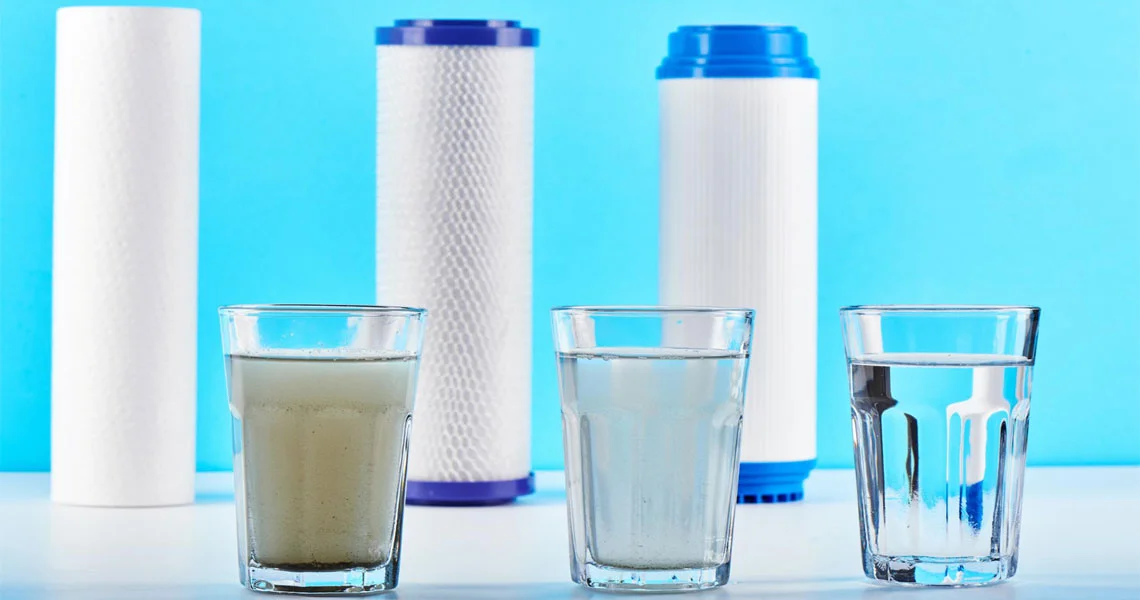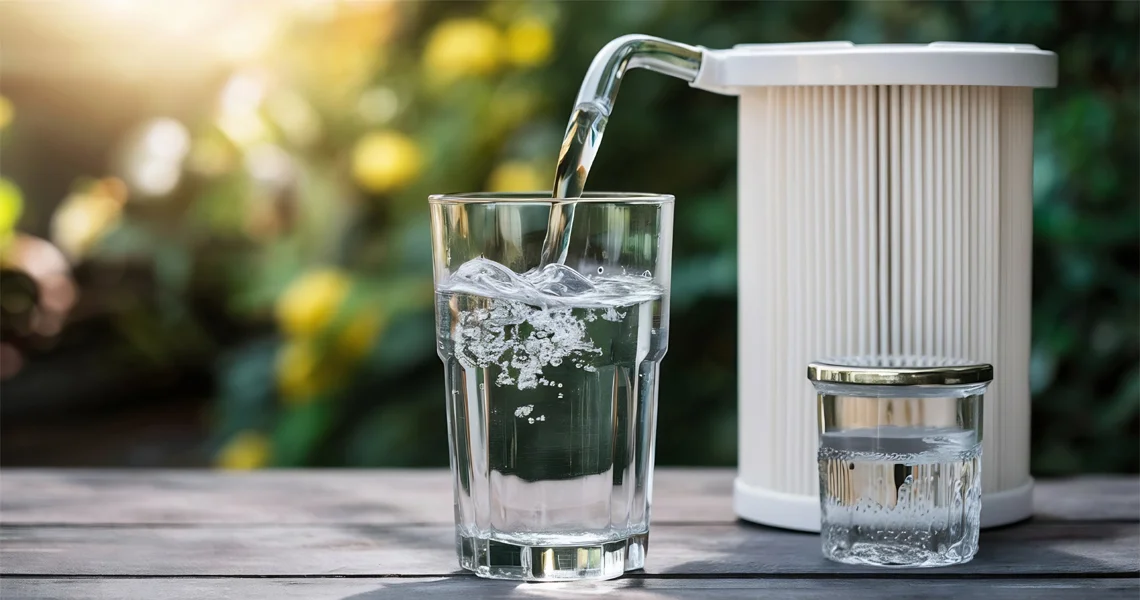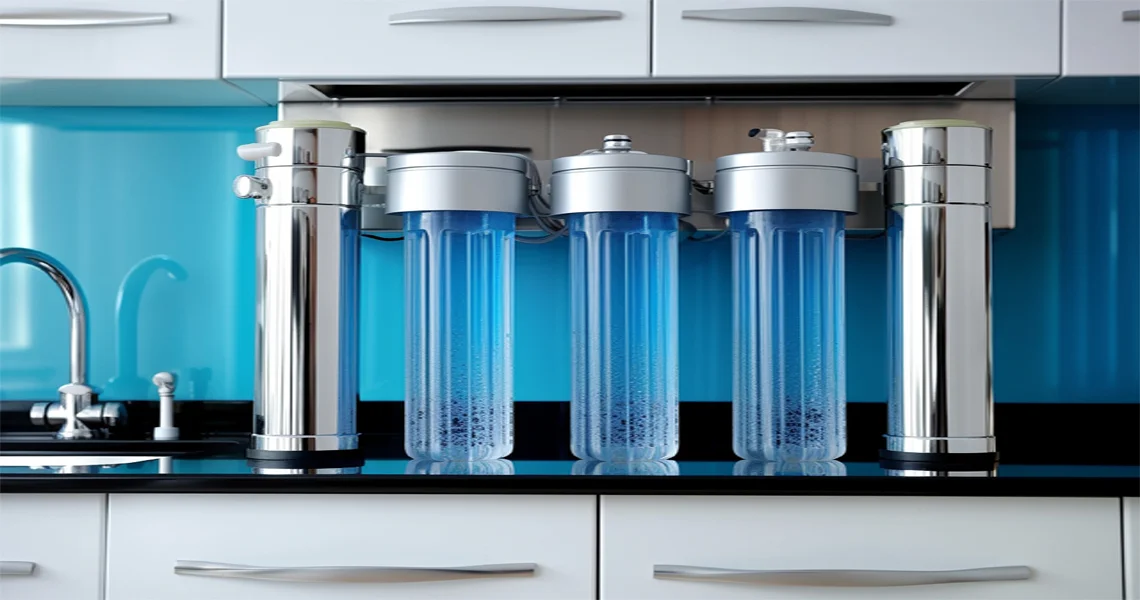Regardless of where you live or where your water comes from, your tap or well has some level of contamination. Whether your water is contaminated with arsenic, bacteria, chlorine, or other pollutants, there is a filter system to meet your needs. With effective filtration, you may enjoy the health advantages and refreshing taste of pure water. The following sections provide information on the various types of common contaminants found in water, their entry into water systems, and methods for removing them from your home’s tap or well.
What are the categories of contaminants in drinking water?
The EPA categorizes pollutants found in drinking water into two major categories:
- Primary pollutants are harmful to health. This group of contaminants includes microbes, radionuclides, disinfectants, inorganic compounds, and organic compounds.
- Secondary pollutants are aesthetically unpleasant but not harmful to consume. These include fluoride, iron, chloride, aluminum, copper, and manganese.
What is in tap water?
The EPA regulates microorganisms, heavy metals, secondary pollutants, and organic compounds in tap water; however, they are still present in minute concentrations. However, some contaminants, such as heavy metals, can infiltrate tap water between its treatment and delivery to your home. Old or corroded pipes can allow lead or copper to leach into the water, contaminating your tap water. To treat bacteria, chlorine is added to city water, which can significantly alter the taste and odor of your tap water. A water testing kit can help you determine exactly what toxins are present in your tap water.
For those facing water filtration problems, testing helps you choose the right system for your home and local conditions.
How do I remove contaminants from drinking water?
Contaminants can be removed from drinking water using a filter or other water treatment equipment. The following are examples of common filtration systems and other technologies used to remove pollutants from water:
- Reverse Osmosis (RO) systems
- UV water purifiers
- Water softeners
- Distillers
- Ceramic filters
- Ultrafiltration systems
- Carbon filters
Each system type specializes in removing particular contaminants, and some work best when combined with others. When comparing water softeners vs water filters, it’s important to understand that softeners focus on hardness minerals, while filters remove toxins and sediments.
Top Water Filtration Systems from Wellness Water
Wellness Water Whole House Filtration System
The Wellness Water Whole House Filtration System is a state-of-the-art system that removes contaminants while restoring vital minerals. It softens and alkalizes water used for drinking, cooking, and bathing, and incorporates the latest multi-stage filtration technology to protect the entire home.
Key Features:
- Removes such harmful contaminants as chlorine, heavy metals, and sediments.
- Improves the taste and quality of drinking water.
- Green, with a commitment to sustainability.
- Very low maintenance from a source of perpetual filtration.
Wellness Water Reverse Osmosis System
The Wellness Water Reverse Osmosis System is a more specialized product that provides the ultimate purification. It removes dissolved solids, heavy metals, and microorganisms, thereby delivering pure drinking water.
Key Features:
- Multi-stage filtration guarantees superior purification.
- Compact enough to fit under most sinks.
- Provides your family with great drinking water.
- Easy-to-change filters that require minimal maintenance.
Wellness Water UV Purification System
For these homeowners, the Wellness Water UV Purification System provides a way to ensure their water isn’t contaminated with bad stuff. It destroys bacteria, viruses, and other microorganisms through ultraviolet light without the use of chemicals.
Key Features:
- Environmentally Friendly. No chemicals.
- Highly effective with many pollutants.
- Small enough to fit in small spaces. Easy to install.
- Low operating costs and little maintenance.
Wellness Water Whole House Water Softener
The Wellness Water Whole House Water Softener is great for people with hard water. It is excellent at stripping the calcium and magnesium that lead to scale deposits in plumbing and appliances.
Key Features:
- Protects plumbing and appliances from the damaging effects of hard water.
- Improves the efficiency of soap and detergents.
- Enhances the feel of your skin and hair after bathing.
- Energy-efficient design that saves on water and salt.
This model has become one of the best water softener 2024 choices among homeowners seeking energy-efficient and eco-friendly designs.
Wellness Water Whole Home Alkaline System
The Wellness Water Whole Home Alkaline System purifies water and increases its alkalinity, which can help balance your body’s pH levels. This system is ideal for anyone seeking to enhance water quality and improve health.
Key Features:
- Restores essential minerals for better health.
- Enhances the flavor and quality of your water.
- Fully-fledged purification process that eliminates all contaminants.
- Designed for easy installation and maintenance.
How to remove microorganisms from drinking water
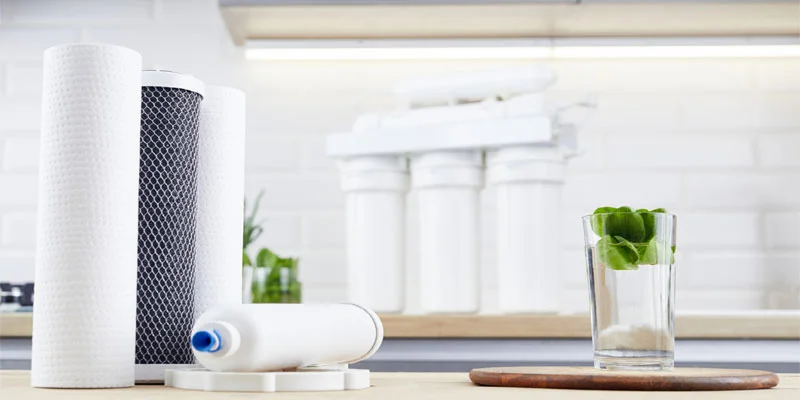
What are microorganisms?
The EPA defines microorganisms as the primary pollutants, which include bacteria, viruses, and pathogens that can cause waterborne sickness. Bacteria and cysts commonly found in water include E. coli, Legionella, Giardia, and Cryptosporidium. Microorganism consumption causes symptoms such as diarrhea, vomiting, headaches, exhaustion, and, in the worst-case scenario, death. The EPA has rigorous limits for microorganisms in city-treated water; therefore, microorganisms are almost exclusively a problem with well water.
Microorganisms can be removed from water using a UV purification system. UV systems, rather than putting water through a filter media, expose it to ultraviolet light, which stops germs from multiplying. Because microorganisms are so minute, filter media can remove some of them, but many are too small to be captured by its pores. To be effective against most germs, filter media must have a micron rating of.3 or lower. A UV filter uses UV radiation to eradicate all germs from water, rather than sending water through a filter. As a result, you may be confident that microorganisms will not pass through the filter medium.
If you don’t have access to a UV water purifier and need to remove bacteria right away, you can boil your water. Boiling is effective because it destroys structural components of germs that aid their survival. If tap water contains pathogens, your municipality will issue a boil water advisory. If your water has significant amounts of other toxins, such as lead or arsenic, boiling will not render it safe to drink. Boiling increases the quantities of these pollutants by releasing water in the form of steam.
Heavy metals in drinking water
Heavy metals are any metallic element that is both dense and toxic. They include mercury, lead, arsenic, and copper. Copper and lead can pollute water through rusted pipes in older homes. Mercury, on the other hand, most commonly enters water sources via rain and snowfall, which accumulate mercury in the air. Arsenic can enter water supplies from natural deposits and agricultural waste. Consuming heavy metals in high enough amounts in drinking water results in symptoms such as increased cancer risk, nausea, abdominal pain, and shortness of breath.
The most effective technique for removing heavy metals from water is to use a water softener and a reverse osmosis (RO) system. While RO systems remove minerals that cause water hardness, the elements can clog the membrane, reducing its efficiency. Adding a water softener before the RO system improves the efficiency and lifespan of the RO membrane.
Chlorine in drinking water
Chlorine is widely used in city water sources to kill microorganisms. However, chlorine alters the taste and odor of water, and excessive amounts of chlorine are dangerous to your health. Excessive chlorine exposure can lead to impaired vision, chest tightness, burning sensations, and shortness of breath. To be safe to consume, water should have less than 4 parts per million of chlorine.
The best whole home water filtration system reduces chlorine levels. Reverse osmosis systems, distillers, ultrafiltration systems, and activated carbon filters all help lower chlorine levels. The simplest and cheapest way to remove chlorine from water is to use a carbon filter, such as the one found in your refrigerator. If you want to remove unpleasant tastes and odors from your water, an under-sink carbon filter is an excellent choice. If you want to reduce the chlorine in all the water that enters your home, whole-house carbon filters and upflow catalytic carbon systems are ideal options. One of a RO filter’s three stages is a carbon core that removes chlorine and other odor-causing compounds. Ultrafiltration systems remove nearly the same pollutants as reverse osmosis (RO) systems, while retaining essential minerals like calcium and magnesium in the filtered water. Distillers are a viable solution for flats or other locations where a point-of-use water purification system cannot be installed.
Fluoride in drinking water
Fluoride is added to city water sources to promote oral health. However, the health consequences of fluoride consumption are controversial. The EPA considers 4 parts per million to be the maximum level of fluoride that is safe to drink, whereas 0.7 parts per million is the optimal quantity of fluoride in drinking water for preventing tooth decay. Consuming excessive fluoride can induce gastrointestinal pain, strange tastes in the mouth, headaches, and eye irritation.
The most common methods for lowering fluoride levels in water are reverse osmosis systems and distillers. RO systems are typically point-of-use systems, which connect to a faucet or other single outlet. Distillers, on the other hand, are countertop filtration systems that use energy to heat water. While RO systems are faster and require less maintenance, distillers are ideal if you do not have the means to install a filter system in your home or apartment.
How to remove organic compounds from drinking water
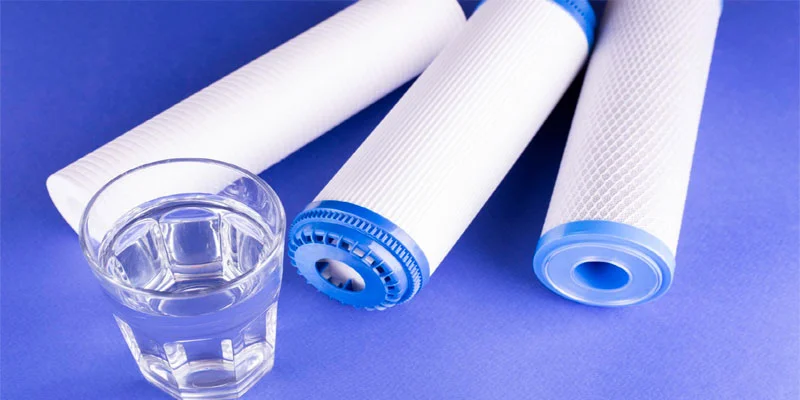
What organic compounds are found in water?
Volatile organic compounds (VOCs) are organic chemicals with low boiling temperatures that are found in drinking water and the air. They are derived from both man-made and natural sources, including paint, gasoline, insecticides, cleaning supplies, and air fresheners. Most VOCs reach water systems due to inappropriate disposal. They then seep into the soil and eventually reach groundwater.
VOCs are best eliminated using an activated charcoal filter. Carbon filters use adsorption to attract pollutants in the filter media as water flows through them. Because VOCs are organic, they contain carbon. This makes carbon filters especially good at eliminating VOCs from water. Carbon filters remove not just VOCs from drinking water, but also bad tastes and odors. The EPA establishes guidelines for VOC concentrations in city-treated water; therefore, VOCs pose a bigger threat to well water than tap water.
How to remove secondary contaminants from drinking water
What are secondary contaminants?
The category of secondary contaminants encompasses multiple elements, which are best filtered using different methods. Secondary contaminants negatively affect water in three ways:
- Aesthetically
- Cosmetically
- Technically
Aesthetic effects include unpleasant tastes and scents, whilst cosmetic effects provide no health danger but are nevertheless undesirable in water. Secondary pollutants can damage machinery and reduce the efficiency of filtering systems. The following elements contribute to these effects:
1. Iron
Iron is among the most prevalent pollutants discovered in well water. While it is not harmful to drink, it does leave unattractive stains, unpleasant flavors, and inefficient filtration systems. Water contains many distinct forms of iron, each of which is treated differently.
Ferric iron is iron that has not been fully dissolved in water. Sediment filters are most effective at capturing ferric iron as it passes through the filter media. Ensure that your sediment filter has a micron rating small enough to catch ferrous iron.
Ferrous iron is iron that has been fully dissolved in water. Water softeners can remove iron at low levels, but other procedures are required if iron concentrations are significant. Alternatives to water softeners for ferrous iron include manganese greensand, KDF filter cartridges, and birm. Manganese greensand is an oxidizing filter that transforms ferrous iron into ferric iron, making it easier to remove. Birm oxidizes iron in water at high pH values. KDF filters are good in removing not only iron, but also high quantities of chlorine and heavy metals.
Bacterial iron uptake occurs when bacteria bind to iron molecules. It typically inhabits poorly maintained or neglected wells. If left unchecked, bacterial iron can block the insides of pumps, pipes, and plumbing equipment. It can be lowered using a procedure known as shock chlorination. This procedure entails injecting high doses of chlorine into the well, which kills the bacteria attached to the iron. A water softener, oxidizer, or sediment filter can be used to reduce iron in the water after the bacteria have been removed.
2. Sulfur
Sulfur is a pungent element that imparts a foul odor and unpleasant taste to water. It is mainly famous for its rotten egg odor and bitter flavor. Sulfur consumption is safe unless it exceeds 500 parts per million. For most water supplies, the primary concern is not the danger of sulfur ingestion, but rather its adverse impacts on water quality.
Activated carbon filters, distillers, reverse osmosis (RO) systems, and ultrafiltration systems can all help reduce sulfur levels in water. Carbon filters’ principal function is to remove unpleasant tastes and odors from water. As a result, the majority of refrigerator filters are activated carbon filters. Reverse osmosis and ultrafiltration systems can be installed in your home, making them a convenient way to remove sulfur and other impurities. Distillers also lower sulfur levels because sulfur does not evaporate at the same temperature as water.
3. Aluminum
Aluminum is a metal recognized for its lightweight and excellent durability. It is a prevalent element in the Earth’s crust; thus, it can be found in a variety of water sources. The EPA considers modest aluminum use to be safe. Aluminum can create a slight coloring in water at concentrations greater than 0.2 parts per million, but it has no effect on flavor or taste. The most successful methods for reducing aluminum in water are reverse osmosis systems and distillers. In addition to its numerous benefits, RO filters and distillers remove more than 98% of aluminum from water.
How to remove emerging contaminants from drinking water
Reverse osmosis and ultrafiltration are the most effective methods for removing emerging pollutants from water. The term emerging contaminants refers to personal care items that have contaminated the water supply. This most usually takes the form of runoff, in which toxins enter surface water and subsequently flow into groundwater. Emerging pollutants are challenging because the goods that enter water are constantly changing. The EPA is investigating the consequences of new toxins and how to prevent them, although the implications are currently unknown. Due to the uncertainty surrounding the development of contaminants, reverse osmosis (RO) and ultrafiltration systems are widely used, as they remove the vast majority of toxins from water.
How to remove PFAS from water
PFAS, or “per- and polyfluoroalkyl substances,” are compounds that are utilized in a variety of industrial applications, including packaging, clothes, furniture, and electronics. These molecules are created by a connection between carbon and fluorine, which is one of the strongest pairings conceivable. Because they are so resistant to disintegration, PFAS have acquired the label “forever chemicals.” The Environmental Working Group discovered that over 200 million Americans may be exposed to PFAS in their drinking water, and because PFAS resist breakdown, they are toxic to the body. PFAS exposure can lead to liver and kidney damage, thyroid difficulties, high cholesterol, and cancer.
The EPA has determined a safe limit for EPAS at 70 parts per trillion (ppt). The EPA’s health advisory guideline of 70 ppt does not force communities to eradicate PFAS below this level. Since PFAS is a relatively new issue, the EPA is continually striving to understand its impacts on the human body and how to safely remove it from water systems.
The most effective technologies for eliminating PFAS from water include reverse osmosis, activated carbon, and ion exchange. Reverse osmosis systems are one of the most effective filtering systems available, removing the great majority of pollutants. Activated carbon filters minimize PFAS levels through adsorption. Chemicals cling to the carbon core as water passes through. Finally, ion exchange devices minimize PFAS levels by exchanging negative ions for positive ones using an anion resin.
Is contaminated water safe for uses other than drinking?
Contaminated water may be safe for uses other than drinking, although this is ultimately determined by the toxins present and the purpose for which the water is utilized. Some pollutants can penetrate the skin more easily than others, or they are poisonous enough that inadvertent consumption can be harmful to health.
How Whole-Home Filtration Enhances Your Quality of Life
At the forefront, the best whole house water filtration system is a lifesaver, fundamentally transforming daily life by filtering water quality throughout a whole house. Every drop you use becomes cleaner, safer, and healthier.
- Better Tasting Water: Say goodbye to chlorine odors and unpleasant flavors. Filtered water is potable, clean, and suitable for drinking, cooking, and making drinks.
- Healthier Showers and Baths: Chlorine and hard water minerals can cause skin and hair dehydration. When applied to remove severity in the water used for showering the skin and hair, it makes the water softer, resulting in smoother skin and shinier hair.
- Safer Cleaning: Washing dishes and laundry with filtered water prevents the deposition of waste by contaminants. It also keeps clothes softer and brighter.
- Convenience and Peace of Mind: Under the assumption that water is pristine and readily available at every tap in homes, there is no need to search for water bottles or filters cluttering your home’s floor.
Residents looking for water filtration Pensacola FL solutions can greatly benefit from a whole-home system that provides consistent protection against local water contaminants.
Make the Switch Today
Your family deserves the best water possible. Wellness Water offers a state-of-the-art whole-home water filtration system that filters drinking water reaching every tap, providing healthier drinks. Whether you need a small-scale setup or a residential water conditioning system Florida, Wellness Water has an option tailored for your home.
Visit Us Today
Explore our selection of the latest water filtration home products at Wellness Water Purification. Easy installation, low maintenance, and superior performance allow us to equip your home with a wellness spa.
Enhance your home’s water quality today with Wellness Water. Do not delay. Experience the benefits of pure, mineral-enhanced water for your health, home, and tomorrow. Contact us now.


